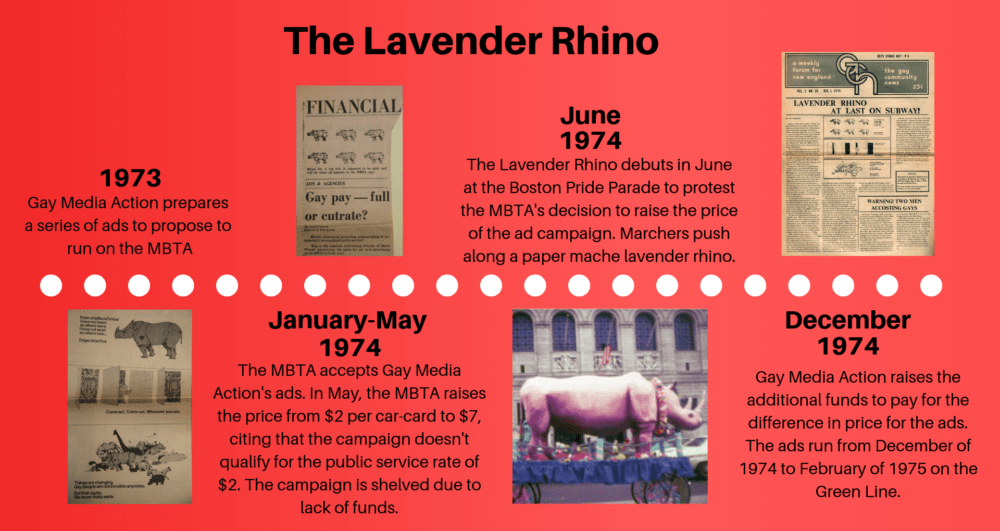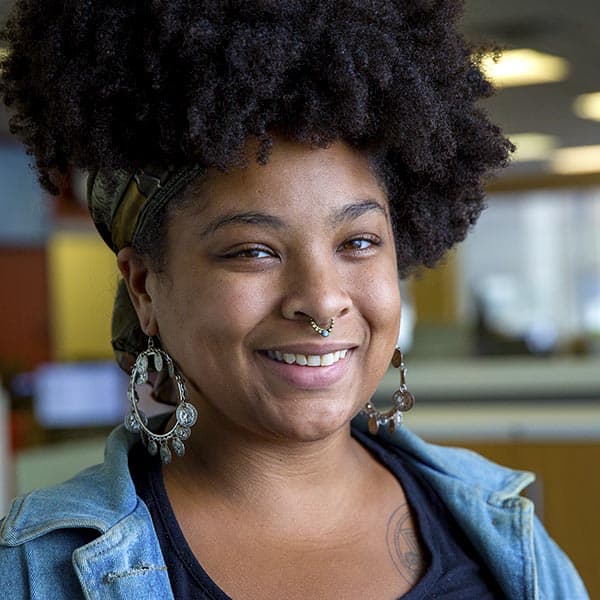Advertisement
From The Archives
How A Lavender Rhino Became A Symbol Of Gay Resistance In '70s Boston

Each week this month, The ARTery will highlight a story from the archives of Greater Boston's LGBTQ history. We're partnering with The History Project, which preserves these stories.
A lavender rhino caused a lot of controversy in Boston during the 1970s.
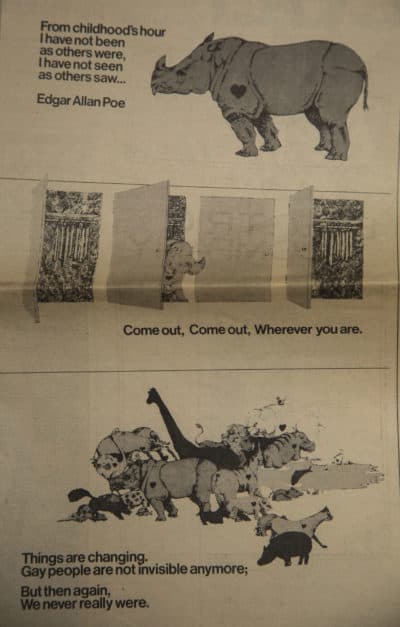
Two Boston artists, Daniel Thaxton and Bernie Toale, reimagined the rhino for a public ad campaign helmed by Gay Media Action-Advertising. Toale, who was also a co-founder of Gay Media Action, explained that the rhino was chosen because “it is a much maligned and misunderstood animal” and that the color came from the mixture of pink and blue, a symbolic merger of the masculine and feminine. The ads were meant to encourage the visibility of the LGBTQ community in Boston.
By March of 1974, Gay Media Action sent press packets detailing the ad campaign to media outlets in Boston. The hope was to drum up enough public support to run the ads on the MBTA in time for Boston's Pride march that June. The MBTA and Metro Transit Advertising, the MBTA's New York City based advertising agent, approved the designs for the ads.
In May of 1974, Metro Transit Advertising announced that its lawyers were "unable to determine eligibility of the public service rate" for the Lavender Rhino ads. This decision raised the $2 per car-card rate for public service projects to a $7 per car-card rate, tripling the cost of the campaign. Gay Media Action didn't have the funds to cover the increase in cost and the Lavender Rhino ads were put on hold.
Gay Media Action made the decision to challenge the MBTA and MTA's decision to raise the price of the ads through public protest and legal means. Gay Media Action hired lawyer Richard Rubino to represent their case in court and mobilized a protest campaign that resulted in hundreds of letters being sent to the MBTA and MTA.
Advertisement
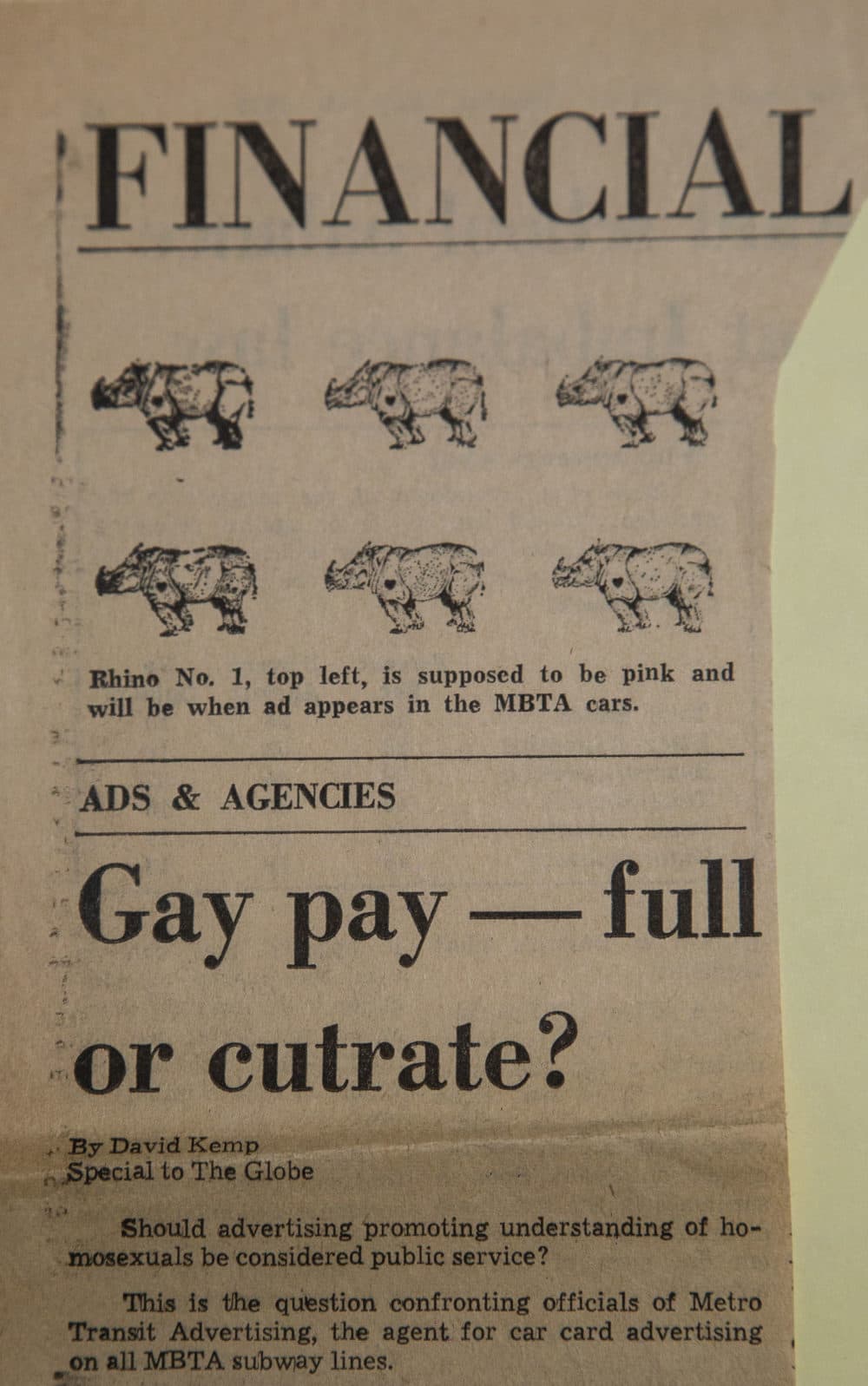
Despite the public outcry, the MBTA Board of Directors announced their decision to stand by the price increase in the first week of June. In response, the Lavender Rhino debuted at Boston's Pride march as people wore t-shirts, pins and signs featuring it. A life-sized papier-mâché Lavender Rhino also proceeded along the route and it was effectively immortalized as a symbol of protest and resistance.
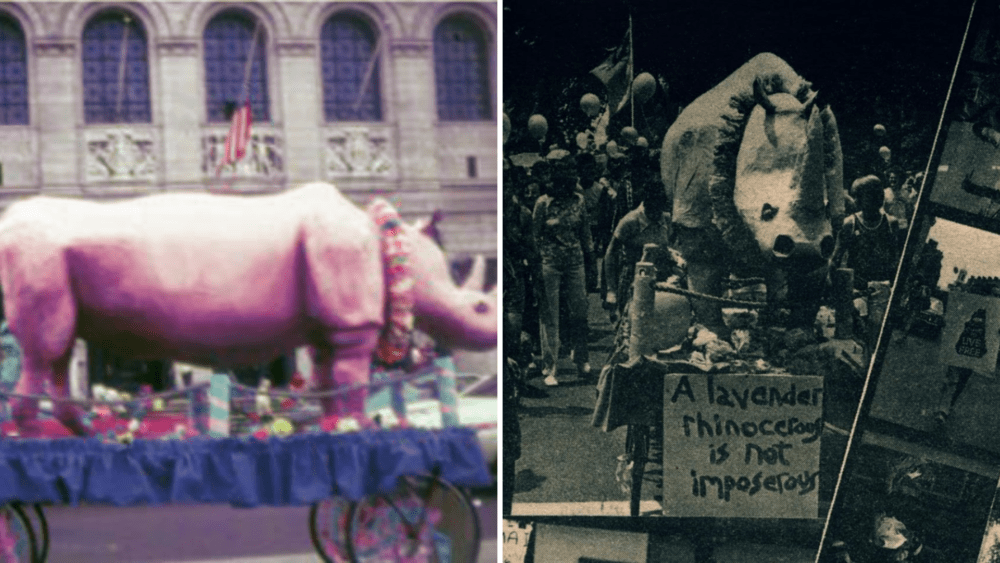
Gay Media Action received donations to pay for the increase in costs, including a donation for $1,000 from Paperback Booksmith (now the Brookline Booksmith). Eventually, the organization raised enough money to begin the circulation of the ads. The number of panels was reduced to 100 and were restricted to the Green Line, strategically chosen for its placement and route through the city and beyond.
By Dec. 3, 1974, the first cycle of ads were running on the MBTA's Green Line. They would run until February of 1975. The Lavender Rhino lived on as a symbol of the LGBTQ community, making a second appearance at Boston Pride in 1976. In 1987, a Lavender Rhino flag was raised at Boston City Hall.
